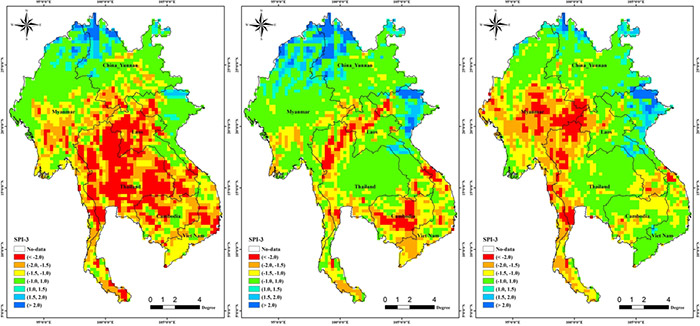- HOME
- ABOUT
- PROGRAMMES
- EVENTS
- NEWS
- DATABASE
- PUBLICATIONS
- MEMBERS & NETWORKS
- BRANCHES
- OPPORTUNITIES

Severe drought occurred in the cultivated area of the Mekong Basin from February to April 2020 By the Chinese Academy of Sciences
ANSO CropWatch-ICP
27 04, 2020


| February-April | The proportion of drought-affected area to crop planting area (%) | |||||
| Cambodia | Laos | Myanmar | Thailand | Vietnam | Yunnan of China | |
| First dekad of February | 25.9 | 36.6 | 15.3 | 14.9 | 8.30 | 4.7 |
| Second dekad of February | 36.4 | 46.2 | 13.9 | 20.7 | 13.5 | 3.0 |
| Third dekad of February | 32.6 | 42.8 | 7.70 | 10.4 | 8.60 | 2.2 |
| First dekad of March | 26.6 | 58.5 | 17.1 | 25.3 | 13.8 | 11.2 |
| Second dekad of March | 28.0 | 42.9 | 20.2 | 18.0 | 18.9 | 23.5 |
| Third dekad of March | 28.2 | 35.5 | 27.5 | 18.3 | 8.0 | 21.8 |
| First dekad of April | 37.3 | 28.1 | 26.1 | 22.9 | 26.5 | 11.7 |
| Second dekad of April | 6.60 | 15.9 | 19.0 | 6.20 | 7.4 | 10.2 |
| Average | 27.7 | 38.3 | 18.3 | 17.1 | 13.1 | 11.0 |